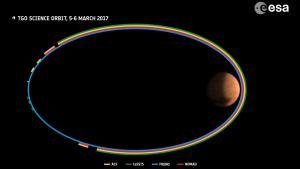Science
Dawn Identifies Age of Ceres' Brightest Area

The bright spots in the center of Occator Crater on Ceres are shown in enhanced color in this view from NASA's Dawn spacecraft.
- Read more
- 454 reads
NASA's Kepler Provides Another Peek at Ultra-cool Neighbor

This illustration shows the seven TRAPPIST-1 planets as they might look as viewed from Earth using a fictional, incredibly powerful telescope.
- Read more
- 350 reads
New optical nanosensor improves brain mapping accuracy, opens way for more applications: Potassium-sensitive fluorescence-imaging method shines light on chemical activity within the brain

A new optical nanosensor enables more accurate brain mapping and opens the way for broader applications in future; Fig. 5 in a paper reporting on the work shows retention of a potassium nanosensor in the extracellular space.
- Read more
- 412 reads
Graphene sheets capture cells efficiently: New method could enable pinpoint diagnostics on individual blood cells

Mild heating of graphene oxide sheets makes it possible to bond particular compounds to the sheets’ surface, a new study shows. These compounds in turn select and bond with specific molecules of interest, including DNA and proteins, or even whole cells. In this image the treated graphene oxide on the right is nearly twice as efficient at capturing cells as the untreated material on the left. Courtesy of the researchers
- Read more
- 378 reads
Triboelectric Nanogenerators Boost Mass Spectrometry Performance

A proof of concept triboelectric nanogenerator produces electrical charges for a mass spectrometer. Georgia Tech researchers have shown that replacing conventional power supplies with TENG devices for charging the molecules being analyzed can boost the sensitivity of mass spectrometers to unprecedented levels.
- Read more
- 387 reads
Tweaking electrolyte makes better lithium-metal batteries: A pinch of electrolyte additive gives rechargeable battery stability, longer life

This is an artist's illustration shows how PNNL's addition of the chemical lithium hexafluorophosphate to a dual-salt, carbonate solvent-based electrolyte makes rechargeable lithium-metal batteries stable, charge quickly, have a high voltage, and go longer in between charges.
- Read more
- 379 reads
Water-Repellent Nanotextures Found to Have Excellent Anti-Fogging Abilities: Cone-shaped nanotextures could prevent fog condensation on surfaces in humid environments, including for power generation and transportation applications

The series of optical microscope images (a) show the patterns formed by the condensation of water from a supersaturated atmosphere on surfaces textured with nanocylinders (top row) and nanocones (bottom row) throughout a 45-minute period. Both textures start out covered with microdroplets, but the cylindrical texture shows large droplets forming over time that stick to the surface. In contrast, the conical texture resists dew formation because the water droplets are so lightly adhered to the surface that, when two drops join together (b, top), they gain enough energy to spontaneously jump off the surface (b, bottom).
- Read more
- 463 reads
Most Complex Nanoparticle Crystal Ever Made by Design: Possible applications include controlling light, capturing pollutants, delivering therapeutics

The most complex crystal designed and built from nanoparticles. Left: An electron microscope image of a slice of the structure (Northwestern University). Right: A matching slice from a simulation of the structure (University of Michigan).
- Read more
- 368 reads
Human Rights
Fostering a More Humane World: The 28th Eurasian Economic Summi

Conscience, Hope, and Action: Keys to Global Peace and Sustainability

Ringing FOWPAL’s Peace Bell for the World:Nobel Peace Prize Laureates’ Visions and Actions

Protecting the World’s Cultural Diversity for a Sustainable Future

Puppet Show I International Friendship Day 2020



